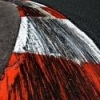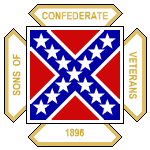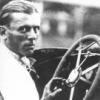Rather than drivers, riders, cars or motorcycles, I find circuits by far the most interesting aspect of motor racing - the places where it all happens. I'm probably in the minority with this, but their shapes, diversity and sheer number utterly fascinate me.
This is my attempt at compiling a list of various facts & figures concerning motor racing circuits. There is no real point to it other than to have a bit of fun and provide an easy overview. Maybe all of this is old news, maybe you will pick up a few new facts along the way, I don't know.
I'm hoping it will be expanded (or corrected where necessary), but most of all that some of you will find it interesting, since it took me a month of Sundays to write it all down...
First
The first ever racing circuit – a closed course as opposed to a course running from A to B – is often believed to have been the 1.0 mi dirt oval of the Rhode Island State Fair Park, located in Narragansett Park, Rhode Island, United States. It was first used for an automobile race in September 1896.
The course was originally a horse racing track. Numerous similar dirt track ovals, typically one mile in length, came into being in the United States from 1900 onwards.
However, the 1878 Green Bay to Madison road race over 201 miles in Wisconsin, United States, included a special stage, where the remaining two steamers had to lap a 1 mile sprint against each other on the horse racing oval of Oshkosh Fairgrounds, thus being the first recorded closed-course race - provided steam racing is taken into account of course. For more details, see the story posted by Don Capps below.
The first non-oval racing circuit may have been the 171.8 km Course de Perigueux, used on 1 May 1898 for a race of the same name. The course started in Perigueux, and passed through Mussidan, Bergerac and Le Bugue before heading back to Perigueux. It was completed only once, so calling it a closed circuit depends on whether or not start and finish were in the exact same place.
The Course du Catalogue at Melun, near Paris in France was a 72.41 km / 45 mi long triangular course over closed public roads used in 1900. Two laps were completed on this circuit.
The first international circuit is believed to have been the Circuit des Ardennes, with start-finish near Bastogne, Belgium. When it was first used in 1902, this course over closed public roads measured 86.08 km / 53.5 mi.
The first purpose-built racing circuit is claimed to be Lakeside Auto Speedway in San Diego, California, United States. This 2-mile dirt oval opened on 20 April 1907.
The first purpose-built paved racing circuit was Brooklands, near Weybridge in England. The facility opened on 17 June 1907 as a 4.45 km / 2.767 mi long course with steeply banked corners.
Also noteworthy is the Detroit Driving Park at Grosse Point in Michigan, United States. It was built in 1893 as a 1-mile dirt oval for gentlemen drivers to test their automobiles. Strictly speaking, it was therefore not purpose-built for racing, but races did take place here from 1901 onwards.
Oldest
The oldest racing circuits still in use are:
- [/list][list=1]
- The 1-mile dirt oval at Indiana State Fairgrounds, in Indianapolis, Indiana, United States, was first used 19 July 1903. The circuit is still active today.
- The 1-mile dirt oval at New York State Fairgrounds, in Syracuse, New York, United States, was first used 10 September 1903. The circuit is still active today.
- The 1.032 mi / 1.66 km mile dirt oval known as the Milwaukee Mile, located in the Wisconsin State Fair Park in Milwaukee, Wisconsin, United States, was first used for racing 11 September 1903 and has seen racing every year since then. Originally a dirt track, it was paved in 1954.
[/list=1]
It should be noted that Knoxville Raceway in Knoxville, Iowa, United States, is also still in use today, having staged its first race on 20 August 1901. However, this was very much a one-off, for racing otherwise only started in 1914.
The famous Indianapolis Motor Speedway, in Indianapolis, United States, was first used in 1909 and has seen racing nearly every year since then.
All of these circuits have never altered their actual layout, although of course substantial improvements were made with regards to track surface and safety, as well as spectator- and other facilities.
The oldest non-oval circuit still in use is the Isle of Man Mountain Course, which has been used since 1911 for motorcycle races, with only slight modifications to its layout. The course was also used for a car race in 1908.
The oldest non-oval permanent circuit still in use is the Autodromo di Monza, which opened in 1922.
Sections of the nowadays entirely permanent Spa-Francorchamps circuit in Belgium were already used in 1921, when it was still a temporary road course. Likewise, sections of the currently partly-permanent, partly temporary Circuit de la Sarthe at Le Mans, France were also first used in 1921.
Fastest
The world's fastest ever racing circuit is the Auto Club Speedway - formerly the California Speedway - near Fontana, California, United States.
Gil de Ferran lapped the 3.265 km / 2.029 mi superspeedway in 30.255 = 388.457 kmh / 241.428 mph with his Reynard-Honda during qualifying for the Malboro 500, on 28 October 2000.
The Auto Club Speedway is thereby marginally faster than the similar superspeedways of Indianapolis and Michigan.
The fastest ever non-oval racing circuit was the 19.286 km / 11.986 m AVUS in Berlin, Germany. Bernd Rosemeyer lapped the circuit in 4.04,2 = 284.314 kph / 176.703 mph with his streamlined Auto Union Type-C during practice for the Avusrennen on 29 May 1937.
The fastest non-oval racing circuit currently in use is the Autodromo di Monza, near Milan, Italy. Rubens Barrichello lapped its 5.793 km / 3.600 m in 1.20,089 = 260.395 kph / 161.838 mph with his Ferrari F2004 Formula 1 car during qualifying for the Italian Grand Prix, on 11 September 2004.
All of these records are unofficial, for they were set during practice or qualifying. Official records can only be recorded during actual races.
A special mention should go to the Fort Stockton test circuit in Texas, United States. A.J. Foyt lapped the approximately 12.411 km / 7.713 mi long oval with an average speed of 413.711 kph / 257.123 mph with an Oldsmobile Aerotech, during a successful world record attempt on 27 August 1987.
This is the highest average speed ever recorded on a closed course. However, the Fort Stockton test circuit is not used for any racing.
Longest
The longest ever racing circuit by far may have been the 1079.820 km / 671.0 mi long Giro di Sicilia circuit used from 1948-1950 for the Targa Florio road race. The course had to be driven once, so calling it a closed circuit depends on whether or not start and finish in Palermo were in the exact same place.
The Grande Circuito Madonie, located on the Italian island of Sicily, and used for the Targa Florio road race from 1906-1911 and once more in 1931, comprised closed public roads with a length of 148.050 km / 92.0 mi or 148.832 km / 92.5 mi depending on source. Competitors had to complete three or four laps.
The longest racing circuit currently in use is the Isle of Man Mountain Course, located on the Isle of Man between Great Britain and Ireland. This circuit is used annually for the TT motorcycle races and measures 60.718 km / 37.73 mi using closed public roads.
The longest ever permanent racing circuit was the Nürburgring, near Adenau, Germany. Its longest configuration measured 28.290 km / 17.582 mi between 1967 and 1982.
The longest ever oval racing circuit seems to have been Miramas in France, with a length of 5.0 km / 3.1 mi. The oval was used in the 1920s and 1930s, but has since been converted into a state of the art BMW test track!
The longest current oval racing circuit is the Autodromo Rafaela in Argentina. It was built in 1952 as a dirt oval of 4.662 km / 2.897 mi and paved in 1966. It has hosted an Indianapolis-style race over 300 miles among other races.
The Talladega Superspeedway, in Talladega, Alabama, United States is sometimes thought to be the biggest oval, but as far as length is concerned, it is shorter than Rafaela, with 4.28 km / 2.66 mi. Talladega opened in 1969 and is currently still in use.
There are several oval test tracks much longer than Talladega, but these are not used for racing. The longest may be the 8.5 mi / 13.679 km high-speed oval at Uvalde Proving Grounds in Texas, United States.
The world's longest (semi) permanent racing circuits - thus excluding circuits used solely for testing - as of August 2008 are the following. Only circuits of six kilometres or longer are listed.
[list]
- Nürburgring - Germany
The longest possible configuration measures approximately 25.96 km / 16.14 mi, consisting of the Nordschleife combined with the Grand Prix course. This layout is currently not used, but the annual ADAC 24-hours race uses a 25.378 km / 15.773 mi variant. - Eurospeedway Lausitzring - Germany
The longest possible configuration is the so-called "Strecke 8" or "Langstrecke", which combines the Grand Prix road course with the ajacent Dekra test oval to form an 11.3 km / 7.02 mi course. This circuit has presumably never actually been used, with the possible exception of testing, although of course parts of it are in regular use for racing. - Miller Motorsports Park - United States
The longest possible configuration is the Full Course, measuring 7.218 km / 4.486 mi. It has been used by the American Le Mans Series from 2006-2007, but as of 2008 the series uses the shorter Perimeter Course. - Spa-Francorchamps - Belgium
The circuit measures 7003.95 metres / 4.353 mi. Parts of the circuit were formerly public roads, but the circuit is now entirely permanent. - Virginia International Raceway - United States
The longest possible configuration measures approximately 6.64 km / 4.13 mi - the official length is 4.2 mi but this seems too long - and is used for track days and driving seminars. It is known as the Grand Course East. - Monticello Motor Club - United States
The longest possible configuration measures 6.597 km / 4.1 mi. This is a private, members-only facility that opened in the summer of 2008. - Road America (Elkhart Lake) - United States
The circuit measures 6.513 km / 4.048 mi. - Reno-Fernley Raceway - United States
The longest possible configuration measures approximately 6.440 km / 4.002 mi. - Mount Panorama (Bathurst) - Australia
The circuit measures 6.213 km / 3.861 mi. While the circuit was more or less purpose-built for racing, strictly speaking it is temporary or semi-permanent.
[/list=1]
It might be interesting to add long permanent circuits of the future:
[list]
- The Gotland Ring in Sweden is planned to be a 7.4 km / 4.6 mi circuit by 2009, and a 28 km / 17.4 mi (!) circuit by 2012. Track map here (PDF file).
- Prairie Hills Motorsports Club in Indiana, United States is currently deing developed. The facility will allow 3600 (!) possible configuration for a total of 7 mi / 11.2 km. The longest circuit will reportedly measure 5.95 mi / 9.57 km. Track map here (PDF file).
- Genoa Motorsports Park in Colorado, United States is currently being developed. The full course is planned to be 5.86 mi / 9.429 km long. The original design was apparently even longer at 6.26 mi / 10.07 km. Track map here (PDF file).
- Victory Lane near Savannah, George, United States is currently being build. The full course is planned to be 4.5 mi / 7.24 km and will be named Phil Hill Motor Sports Complex. All configurations will be bi-directional. This will be a private, non-spectating track. Track map here (under amenities > motor sports complex).
- Alpine Motorsports Club, near Allentown, Pennsylvania, United States is is planned to be 4.2 mi / 6.76 km long. It should open in 2009. Track map here.
- Racers Ranch in Texas, United States is planned to be approximately 4.0 mi / 6.4 km. There is no track map available.
- Potrero de los Funes in Argentina will be operational by November 2008 to host the FIA GT series (pending homologation) and measure 6.186 km / 3.844 mi. It will likely be a semi-permanent facility. Track map here.
- Kansas City International Motorsports Park, near Kansas City, United States, is planned to be a 3.75 mi / 6.004 km long circuit by February 2010. Track map here.
[/list=1]
This list was compiled in early August 2008.
Shortest
The shortest racing circuits are 1/20 mi – 80 metres – long ovals, used mainly in the United States and Canada. There are also figure-8 circuits of the same length.
The shortest non-oval racing circuit may have been Le Mas du Clos in France, which measured a mere 400 metres for a few years following its opening in 1963. However, the circuit seems to have been used for private competitions, testing and training only.
The Roskilde Ring in Denmark was only 670 metres in length from 1955-1957. The Longridge circuit, located in a quarry near Longridge, England, was used for motorcycle racing from 1973-1978 and measured merely 692 metres.
Obviously, there are numerous karting circuits that are considerably shorter. There might also be shorter circuits not used for racing, but rather only for testing or demonstrations.
Width
The world's widest non-oval racing circuit is believed to be Sepang International Circuit in Malaysia: the 5.542 km / 3.444 mi course is at least 16 metres / 52.49 feet wide along its entire length.
It is possible there are or were airfield circuits even wider along their entire length.
Corners
The circuit with the highest number of corners supposedly was the aforementioned Giro di Sicilia circuit used from 1948-1950 for the Targa Florio road race due to its length of over 1000 kilometres, although the number of bends is unknown.
The Grande Circuito Madonie on Sicily, also used for the Targa Florio, reportedly comprised over 800 bends.
The most twists and turns on a permanent circuit could be found at the Nürburgring, which had nearly 180 changes of direction in its longest form mentioned above.
On the contrary, there were several circuits with a circular shape and thus with merely one bend, either to the left or right.
The earliest of such circuits presumably was the 1.0 mi Los Angeles Coliseum Motordrome near Playa del Rey, California, United States. This wooden board track was used from 1910-1913.
Another early example includes the 2.77 mi / 4.46 km circuit using the main street in Corona, California, which was used in 1913, 1914 and 1916.
Perhaps the most famous circular circuit was 1.0 mi Longhorne Speedway, near Levittown, Pennsylvania in the United States. Used from 1926-1971, it was also known as "The Big Left Turn". Originally a dirt track, it received an asphalt surface in 1965.
Although never used for racing, the Nardo test circuit in Italy deserves a special mention, for it is an approximately 12.465 km long perfect circle. This may well be the world's longest continuous bend. It does not require steering input at relatively low speeds.
The circuit with the highest number of bends in only one direction may be the Sofia street circuit in Bulgaria, used at least from 2006 on. This features seven bends, all of which are righthanders – although it arguably also includes a very slight kink to the left. Track map here.
Also noteworthy: the 2.87 mi / 4.6 km Greenwood Roadway near Des Moines, Iowa, United States, was active from 1963-1966 and featured seven or eight righthanders in succession, depending on how one counts. However, the circuit also included several bends to the left.
A non-oval permanent circuit with bends in only one direction does not seem to have existed.
Most circuits
The country with the most racing circuits must surely be the United States of America, where some 6848 ovals, road courses and figure-8 tracks have existed since the late 19th century, by count of Alan E. Brown (2003).
Edit: as Darren Galpin points out below, the total number is even greater and somewhere around 7000.
Location
The world's northernmost racing circuit seems to be Arctic Circle Raceway, near Mo-I-Rana, Norway. As the name suggests it is located near the Arctic circle.
The world's southernmost racing circuit seems to be Teretonga Park, near Newfield in southern New Zealand.
Danger
The most dangerous racing circuit strictly by number of recorded fatalities of competitors, is by far the Isle Of Man Mountain Course with at least 228 fatalities in the period 1911-2007. This is despite the fact the public road course is only used once every year for motorcycle races.
Edit: as Barry Boor points out below, the circuit is used twice a year.
The most dangerous permanent racing circuit by the same definition is the Indianapolis Motor Speedway, with at least 55 fatalities in the period 1909-2003.
Miscellaneous
Racing circuits - as opposed to test circuits such as Fiorano - that pass over/underneath themselves are surprisingly rare, particularly permanent venues. In random order:
[list] - Suzuka, Japan
- Central Circuit, Japan
- Hämeenlinna/Ahvenisto, Finland
- Tallinn (street circuit), Estonia
- Autobahnspinne Dresden-Hellerau (street circuit), Germany
- Autobahnspinne Bautzen (street circuit), Germany
- Norisring (street circuit, 1949-1951), Germany
- Monza (full course including oval), Italy
- Autodromo El Zonda, Argentina
- Autodromo General San Martin, Argentina
- Autodromo Juan Manuel Fangio, Argentina
- Brasilia (street circuits, 1962 & 1966-1970), Brazil
- Las Palmas (street circuit, 2000), Peru
- Sofia (street circuit), Bulgaria
- Havirov (street circuit 1971-1995), Czech Republic
- Ostrava (street circuit 1973-1990), Czech Republic
- Most (street circuit 1979-1982), Czech Republic
- Palanga (street circuit), Lithuania
- Oran Park, Australia
- Paramount Ranch, United States
Books
By my count, there are over 300 books about racing circuits. These can be more general or about one circuit in particular, although books in the latter category tend to be more about the races at the circuit in question rather than the track itself.
Of the books that treat circuits in a more general sense, I'd particularly recommend:
- Joe Saward, The World Atlas Of Motor Racing, 1989
- Alan E. Brown, The History of America's Speedways: Past & Present, 1984 (updates reprints 1994 and 2003)
- Harold L. Osmer, Where They Raced: Auto Racing Sites in Southern California 1900-1996, 1996 (updated reprint 2000)
- Gordon Eliot White, Lost Race Tracks: Treasures of Automobile Racing, 2002
- Pete Hylton, Ghost Tracks: A Historic Look At America's Lost Road Racing Tracks, 2007
- Terry Walker, Fast Tracks: Australia's Motor Racing Circuits 1904-1995, 1995
























